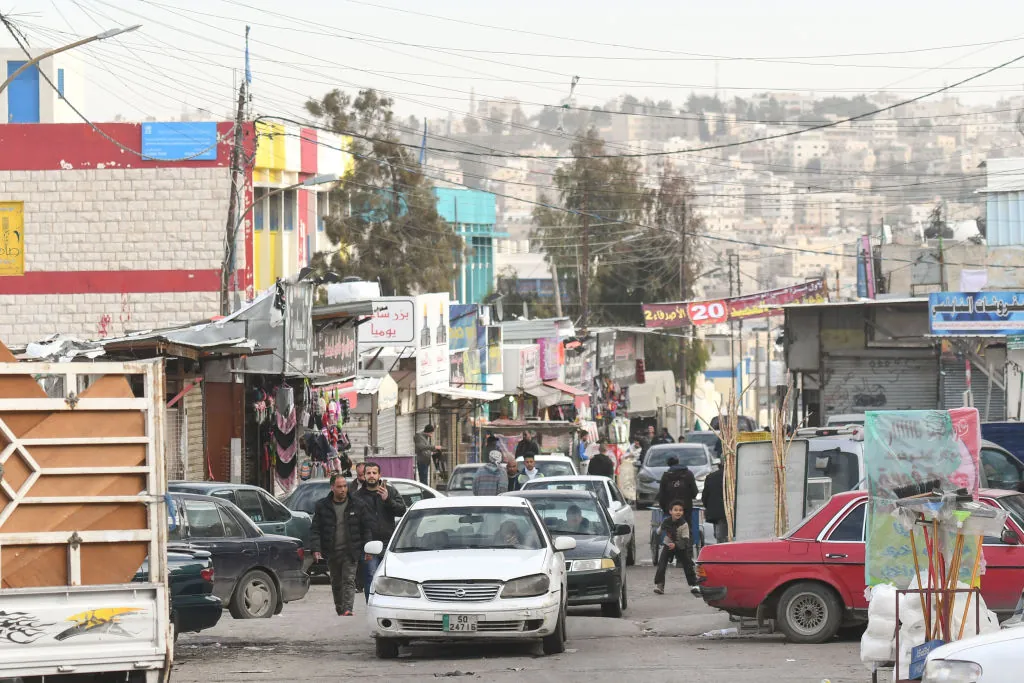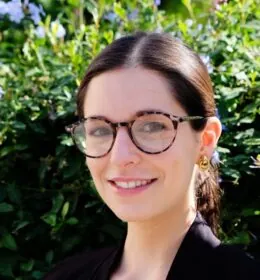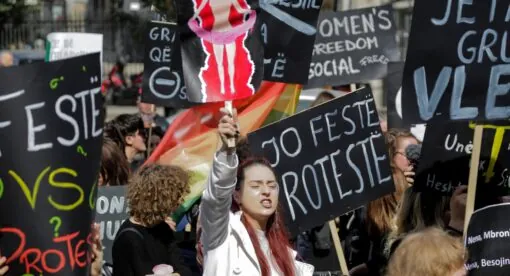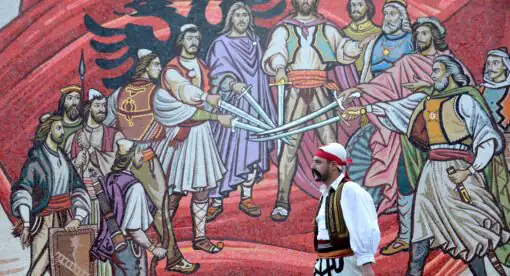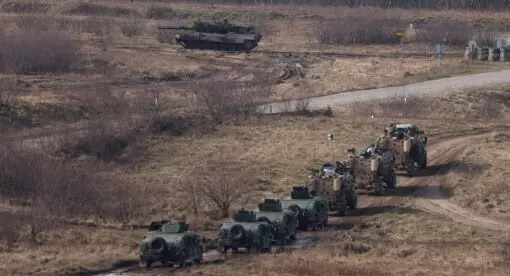Over 70% of the world’s refugees, stateless people, and internally displaced persons are fleeing to urban areas, where opportunities and housing are most readily available. In 2022, the number of forcibly displaced people reached over 100 million for the first time, and migration experts estimate that the climate crisis will displace another 1.2 billion people by 2050.Many of these “destination” cities themselves are responding to climate disasters and lack the infrastructure, public policies, and resources to cope with the incoming population surge.
Jordan’s capital city of Amman has faced this issue, absorbing over a quarter of the country’s UNHCR registered Syrian refugees. According to the municipality, refugees make up a significant portion of Amman’s population. Urban centers like Amman bore the brunt of the global refugee crisis and witnessed precipitous population growth. Although the Jordanian government and large international donors like USAID provided humanitarian aid to refugees, they often overlooked Amman’s urban planning issues in their responses to the crisis. USAID and other donors are increasingly cognizant of the importance of improving urban infrastructure in major urban centers housing large populations like Amman, but much more work is needed. Today, transportation is limited, water is scarce, and inequality persists in the Jordanian capital.
With climate migration increasing, cities across the Global South, U.S. policymakers, and experts at USAID can draw on the successes and learn from the shortcomings of the refugee crisis in Amman by making proactive investments in city planning in partnership with the cities that are most likely to serve as a destination for climate migrants in the future. USAID can channel development funds toward public infrastructure, such as robust transportation networks and water systems, to increase wellbeing, productivity, and resilience for generations to come. Prioritizing these types of development projects will also prevent a wide and potentially destabilizing refugee crisis.
Amman’s Struggle to Accommodate Refugees
Following the outbreak of the war in Syria, refugees gravitated toward Amman, where 80% of all industrial and service activities in Jordan are located. This rapid population growth exacerbated existing problems with urban planning, resources, infrastructure, and zoning. In 2011, when Syrian refugees began arriving in Amman, they faced a deeply polarized city split between the eastern and western parts. East Amman communities remained underdeveloped, while West Amman communities hosted higher levels of wealth, paid higher taxes, and received more services like street cleaning and water supplies. Employment opportunities in Amman fell into the same urban polarity, with the city’s western communities hosting the most modern shopping centers, hotels, universities, sports stadia, and other services.
These dynamics pushed Syrian refugees to settle in East Amman, where housing was affordable but often located far from social services and job opportunities. Government social services offices are disproportionately based in the affluent sections of Central and West Amman, while there are almost none in East Amman. UNHCR’s offices in Amman also are in the west side of the city.
Refugees thus settled in the communities that were least equipped to absorb them. Both Jordanians and refugees suffered from this disjointed process.
Transportation
Amman’s underdeveloped transportation system multiplied these disparities, confining refugees to low-income communities in East Amman and limiting their access to employment, health care, and public services. Amman is served by the Amman Bus, two lines of the city’s newly launched Bus Rapid Transit (BRT) system, and an informal system of Coaster buses. Outside the city center, coverage is patchy at best, and while this network provides coverage to populous areas, users complain of service delays, inconsistency, a lack of formal bus stops, and for many women, harassment. Steep hills, dilapidated staircases, large cracks, and trees in the middle of sidewalks make the city largely unwalkable. Commuters frequently rely on two or three buses per trip, burdened by the need to pay multiple fares due to the lack of payment integration across different bus systems. These transportation problems further financially strain refugees, requiring them to allocate over half of their monthly income to transportation on average. Largely barred from formal work in Jordan, refugees often rely on rent vouchers and food distributions to make ends meet, leaving them with little money for transit.
Prior to the influx of Syrian refugees, the city attempted to rectify its public transportation gaps, making plans to finance a rapid bus project. Accusations of corruption, lack of accountability, the Arab Spring and the refugee influx, among other factors, pushed city officials to adopt a soft launch strategy, delaying the implementation of the bus until 2021. This strategy resulted in 11 years of widespread road closures and additional traffic during the construction period while only serving a limited geographical area via two bus lines. While early research demonstrates that the Bus Rapid Transit system has achieved several positive outcomes and success measures, its slow and limited implementation demonstrates the challenges Amman is facing in addressing its infrastructure issues.
Water Distribution
The refugee influx also exacerbated problems with Amman’s water infrastructure, leading residents to pay higher water costs. Over the past 20 years, Jordan’s population growth has increased the demand for water by nearly $600 million annually. Rainfall simultaneously fell to 60% of normal levels, and nearly half of the country’s dammed reservoirs have dried up. The dilapidated state of Amman’s water distribution network contributes to water scarcity due to leakage, inadequate billing, and illegal siphoning.
Public services like water infrastructure are difficult to address on an ad-hoc, emergency basis. While donors have initiated a bevy of infrastructure projects to address Jordan’s water problems, these interventions take time. The result is prohibitively high water costs for refugees and poor communities, particularly in East Amman, as people turn to costly sources including water tankers, private wells, and reverse osmosis.
Calculating the cost of water is difficult, as many parts of East Amman lack ground cisterns and sufficiently large roof tanks. Although Jordan’s water company Miyahuna subsidizes the cost of water, households only receive water on specific delivery days. Water tankers likely make up the difference, selling high-priced water to supplement the subsidized deliveries. Because many of these tanker companies operate illegally, no studies have yet been able to properly calculate the true financial burden of water in East Amman.
Learning from Amman
Amman’s problems with zoning, transportation, and social services show the consequences of overlooking proactive investments in infrastructure. Meeting refugees with ad-hoc, emergency interventions dampens the prospects for these refugees and their host communities.
“But Amman’s BRT system also shows the potential impact infrastructure improvements can bring to vulnerable communities. Early research has shown that even with only two bus routes, Amman’s new bus system can improve women’s mobility and reduce women’s stress while commuting by 17%, enabling people to access opportunities outside their immediate community.”
Donors are also stepping in to support infrastructure improvements to address Amman’s water shortage in a city where almost half of all water transported by pipes is lost to leakage. USAID’s investments in Jordan’s water infrastructure represent a sustainable use of aid dollars that could have long-term impacts on urban resilience. In 2019, USAID estimated that its intervention “saved 3.2 mcm of water through water network construction, pressure management, leak detection, repair work, and improved meter accuracy.”
For example, USAID has invested in rebuilding a wastewater treatment plant in Jordan, modernizing its infrastructure and increasing its capacity. The new plant, located south of Amman, provides more than 67,000 people with clean water, thus preventing disease, protecting the environment, and making sure there is sufficient water for agricultural irrigation. Infrastructure-focused projects like this are likely to have benefits well into the future.
Leading new investment schemes in cities across the Global South is another way that U.S. officials can increase the world’s climate change readiness. In Jordan, the Millenium Challenge Corporation (MCC), a U.S. foreign assistance agency created by Congress in 2004, helped secure private financing for an expansion of the As-Samra wastewater treatment plant that supplies water to millions of people in Amman. The plant expanded with support from both public and private actors, and MCC played a key role by providing viability gap funding, which enabled the project to be financially viable and motivated the entry of private actors. As a result, the plant increased its capacity by over one-third. This model of blended financing could benefit infrastructure projects in other emerging markets.
Cities around the world can learn from both the successes and the failures of Amman, as climate change continues to displace millions of people. USAID can help these cities prepare through investing in infrastructure and other urban planning projects, improving health care, water supplies, and transportation networks. These improvements can stem the impacts of the upcoming refugee crisis and climate resiliency in destination cities. Failing to prepare these cities could result in secondary or tertiary migration crises, where destination cities are unable to handle the number of climate migrants.
The results are already visible. Unpredictable monsoons and droughts in Southeast Asia forced over 8 million people to migrate toward the Middle East, Europe, and North America. Climate-driven drought, desertification, flooding, environmental degradation, and resource scarcity have contributed to the conflicts in Somalia, Sudan, Afghanistan, and Syria, displacing about 22.9 million people through these four conflicts alone. Secondary and tertiary migration crises will further accelerate population growth in developing cities, pushing weak urban infrastructure to its limits. The global economy will feel the results of investments in urban infrastructure, which can boost or hamper economic productivity and stability.
With their numbers increasing, many climate migrants and displaced persons will continue to flee for dense hotspots and urban areas, including the “southern highlands between Bangalore and Chennai in India, the central plateau around Mexico City, and Nairobi, Kenya.” With the example of Amman in mind, donors should begin investing in improvements to resource networks, transportation systems, and infrastructure projects in these likely hotspots. These investments will result in improvements to the quality of life for residents and migrants alike, increasing their stability for decades to come.
Zoe Robbin is currently a non-resident fellow at New Lines, researching the nexus of water and diplomacy. Previously, she was a Fulbright research fellow in Jordan where she focused on climate change, migration, and public policy. She has written for Foreign Policy, Al Jazeera, and New Lines Magazine among other outlets. She also co-leads the Diplomacy working group of Foreign Policy for America’s NextGen network and is a Senior Fellow with Humanity in Action. She tweets at @zoe_robbin.
Ayat Husseini is a Fulbright Research Fellow in Jordan. Her research is at the nexus of development, urban planning, and forced migration. She is also a data and document management consultant working with local urban planning firms in Amman. Previously she worked in refugee resettlement and in the New York State Assembly on community organizing, constituent services, and policy.
The views expressed in this article are those of the author and not an official policy or position of the New Lines Institute.

